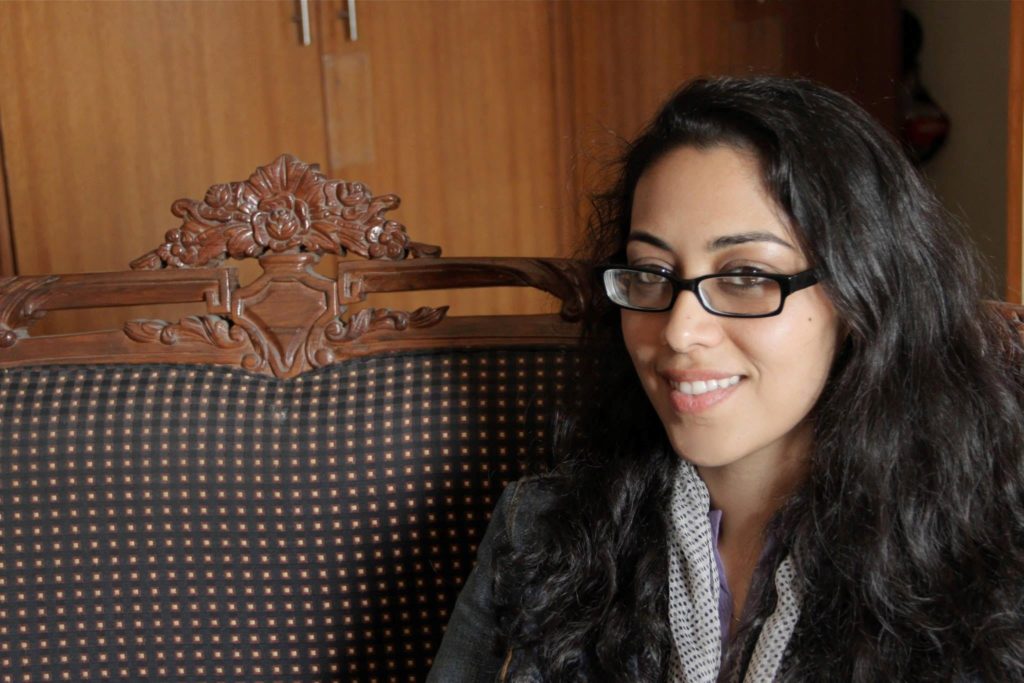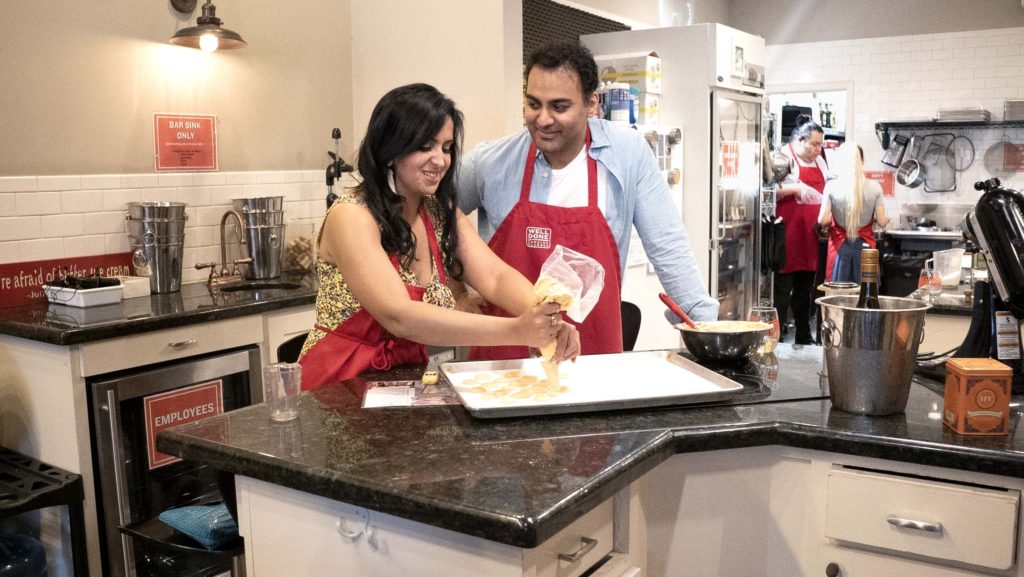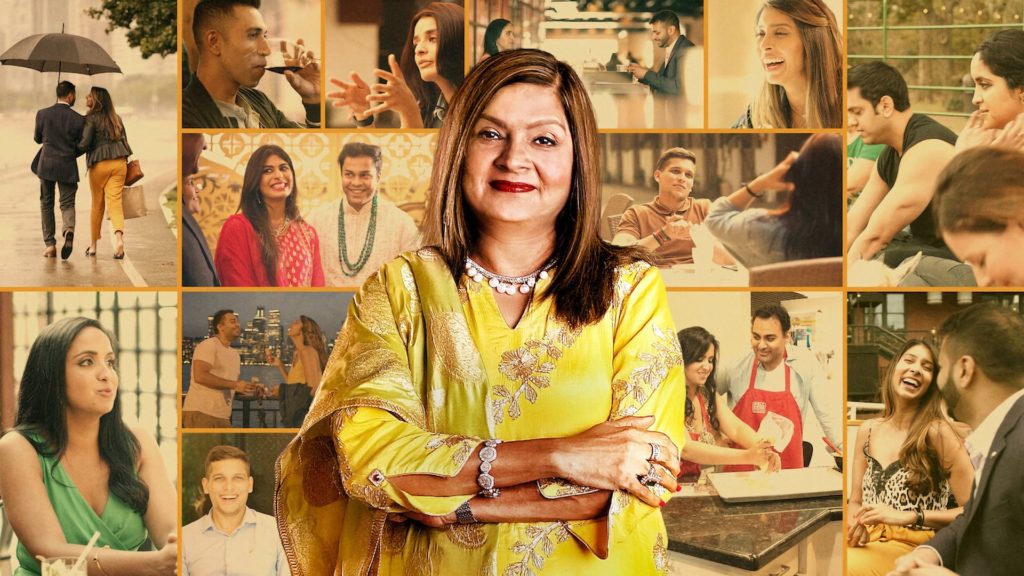Due to a non-functioning plugin, the FB Likes disappeared 🙁 – if you like the post you can re-start the Likes all over again!Have a brand-new Like button installed!
4324 people reached on Lassi with Lavina Facebook page – 414 interactions – 31 Likes( FB Insights)
M.r. Rangaswami, Shagun Mehandru and 85 others like it on FB – 80 comments on FB
650 Views on LinkedIn – 10 Likes and 5 comments
Sima Taparia in Indian Matchmaking on Netflix
The Great Indian Matchmaking Drama Comes to Netflix
[dropcap]M[/dropcap]an has been to the moon but is still stymied in solving that most ubiquitous problem – finding a suitable spouse! This worldwide stress is particularly common amongst Indians and the Indian Diaspora because for them marriage is the very basic of a good life. Parents start dreaming of their kids’ marriages as soon as they utter their first words. It becomes the end-game of all their efforts.
So not surprising that Netflix has Indian Matchmaking on its mind as it caters to the huge Indian Diaspora now – it’s a topic millions of its viewers know and yearn for instinctively. Indian Matchmaking, the new series is part docu-drama, part reality show and says in a more realistic way what Bollywood fans have known forever – relationships count!
An Indian doesn’t marry just a spouse but the entire extended family. In this new series executive produced by Smriti Mundhra, matchmaker Sima Taparia guides clients in the US and India in the arranged marriage process, offering an inside look at how it all works.
As the Hollywood Reporter noted, “Indian Matchmaking doesn’t shy from all the ways Indian (and Indian diasporic) arranged marriage can seem strange to outsiders: the preoccupation with height and caste, first dates with family members tagging along, talking about parenting and moving across the country for the other person on a first or second date.”
[dropcap]I[/dropcap]n Indian Matchmaking you get to meet seven bravehearts out not just to date but find a spouse in a frenzied modern world through the efforts of matchmaker Sima Taparia. Aparna, Nadia, Vyasar and Pradhyuman are just some of the real life singles who are opening up their private lives – and that too under the probing glare of the world camera!
Taparia is a blend of compassion and criticism, of wheedling and accurate predictions. She’s willing to try any means and does not mock the assistance of horoscopes and prayers, face readers and life coaches.
Smriti Mundhra, Los Angeles based filmmaker, was recently nominated for an Oscar for her short doc St. Louis Superman, a charged subject very different from the froth of Indian Matchmaking. Her 2017 film A Suitable Girl , however, explored the same subject as Indian Matchmaking. She says, “There is sort of a common thread and for me, it’s been important to explore through films and TV and pop culture, not just the trauma and the hardships that we go through as people of color, but also the joy and the fun.”
In Indian Matchmaking, Mundhra takes a totally fresh look at the institution of arranged marriages. Though the methods may be different now, she feels that “young Indian people are looking for the same things that everybody else in the world is – we just have a different way of going about it sometimes. And it also allows us to see the ways in which we’re struggling to keep the tradition alive in the face of modernity.”

[dropcap]A[/dropcap]s a young woman in her 20’s Mundhra herself went through the matchmaking process! “I think I met about 100 guys over the course,” she recalls. “Ultimately I didn’t get married through that process because I ended up marrying somebody I met in graduate school.” She did however meet the inimitable matchmaker Sima Taparia whom she featured in ‘A Suitable Girl’ and who was the catalyst for this new wedding venture.
When Mundhra had a meeting in 2017 with Netflix which was planning to expand in India, she suggested this project and it was greenlit right away. Indians are not homogenous and even in the modern age matchmakers are pretty common so these stories are totally believable as couples struggle to find happiness and bring their families along for the ride. The seven people profiled in this series are real people and you see them, warts and all.
“We weren’t going to try to make caricatures out of anybody,” says Mundhra. “ We weren’t there to make Real Housewives type of manufactured situations where you make people look ridiculous and, create characters that are good for TV but are not authentic to people’s true lives and true selves. I think that’s why people feel comfortable with us, because they trusted us.”
She adds, “If you look at the arc of each person’s story, it moves towards something that is redemptive and hopefully people see the full journey and not just take specific moments out of somebody’s life.”
Many viewers have been uncomfortable with the regressive way Indian culture has been portrayed with the emphasis on caste, color and physical good looks. But these are true stories so one can’t shoot the messenger for showing what actually exists. It may be embarrassing for many woke young people but India and the diaspora is a mixed bag when it comes to social realities and India is different centuries bundled together. Mundhra could have selected more positive examples but then these lives do exist, and are real too.

[dropcap]“W[/dropcap]e’re not here to judge Indian culture or our institutions,” says Mundhra. “Hopefully what people take from this is that there are parents who want what they think is best for their children and young people reflect back what they’ve internalized, how they were raised and just yearn for partnership. That’s human and extremely relatable to a lot of people.”
[dropcap]S[/dropcap]ome dark things about Indian culture do come out with this infatuation with white skin color and physical beauty, this raja syndrome where a man can see 150 women before he selects a spouse. Says Mundhra, “Maybe we need to all consider and reckon with things about our culture that maybe are not so great, but it’s our culture, and I think it’s up to us to really look at that and reflect and try to resolve some of the things that are maybe not so fair.”
She hopes the series will also remove some stigmas where non-Indian audiences think Indian arranged marriages are about forced unions and child brides and may even lead them to consider getting an efficient matchmaker themselves!
She says, “It will hopefully show them that their desires and their lives are not that dissimilar to urban people all around the world. We all want the same thing; we all struggle with the same thing with our parents. It will also show Indian-Americans that Indians in India are not so different – our lives are actually more similar than they are different.” Perhaps Sima Taparia said it best, “Ultimately my efforts are meaningless if the stars are not aligned.”

[dropcap]W[/dropcap]ith ‘Indian Matchmaking’ as with the recent soap ‘Never Have I Ever’ the exciting thing for desi audiences is that they are now becoming the center of their own stories on international screens. “As a South Asian woman I’m so happy to see our experiences and the texture and nuance of our lives a part of pop culture. Whether it’s a coming-of-age sitcom, or a dating show it’s great to see that the story of South Asians has evolved to the point that we are now a part of the general cultural conversation, and that’s what makes me really proud of this show.”
For some viewers, Indian Matchmaking is hitting pretty close to home. Bhumi tweeted, “The reason arranged marriage is predominantly a “Desi” thing is because it is rooted in caste. It’s not about finding love, it’s about keeping the bloodline “pure” or some other such nonsense. This institution needs to die, not be given a Netflix special.”
Kam noted on Twitter: “Cannot put into words how disappointingly accurate Indian Matchmaking is of modern day dating within the community.”
And yet another gave this one line review through her tweet, “#Indian Matchmaking – it’s all fun and games till your mom starts watching the show and goes looking for a Seema Aunty to match you with someone. HELP!”
With the kudos and the criticism pouring in, Smriti Mundhra says, “I’m excited for the conversation that it’s sparking. I think it’s good for us as a community to have this conversation and I look forward to that!”
(This article was published in my column India in America in CNBCTV18.com)

